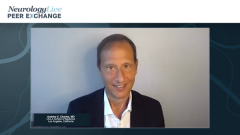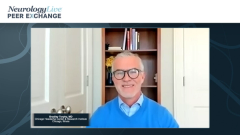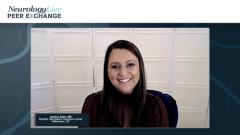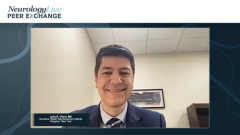
Acute Versus Preventative Treatment of Migraine
Dr Julio R. Vieira defines acute versus preventive treatment for migraine and highlights the differences in goals of therapy for each.
Episodes in this series

Jessica Ailani, MD: Julio, you mentioned acute and mentioned preventive. What are the differences? This gets everybody a little confused. What do we mean when we say acute treatment? What do we mean when we're talking about preventive treatment? We talked about why you'd want prevention— because we want to reduce frequency of attacks—but why would you take an acute treatment? When is the right time? And we talked about goals. What do these things mean?
Julio R. Vieira, MD: Definitely. Whenever you have a migraine attack, you should have the availability of an appropriate treatment and try to take it right away to try to minimize your disability, to achieve pain improvement. And nowadays, we've been talking about pain freedom. And at the end of the day, patients are only mostly interested in, when am I going to be able to return to my function, to my life, to my event, to work—to whatever they were doing before? And the earlier that you were able to onboard your medication, the better. Despite us having a lot of medications which are migraine-specific available to us for such a long time, most patients do not have access to that. There's epidemiological data showing that approximately 92% of patients with episodic migraine use acute therapies. Only 36% of those were having migraine acute therapy, and that's not even the migraine-specific therapy. Only 18% of those were taking migraine-specific medications at the time, which were triptans. About 12% of them were taking opioids, which, unfortunately, remains very common in patients overall, and 6% of those were taking barbiturates. Out of them, 16% of participants were migraine. They were currently taking opioids, and 14% were prior users of opioids. Even those who can discontinue, yet it's still prevalent among different providers. And the goals of acute and preventive therapy—they're very different. There are 3 steps for successful access to migraine-specific medications, and they seem very simple, but unfortunately, sometimes it's not very easy to get to it. Number 1 would be appropriate medical consultation. Get into a provider, get into a headache specialist, get into a general neurologist who can make that diagnosis, which is the next 1: having an accurate diagnosis like we're talking about. Sometimes patients come to see us, and they have not just 1 type of headache, but they have multiples. And sometimes if they go see another provider and they're like their headache specialist is crazy. And suddenly, we have all these diagnoses. And sometimes people can have more than 1 headache at the same time. And then also to develop an effective treatment regimen, which most of the time must be individualized. Like Jessica was saying, why don't all your patients all have the same medication, right? And with all of those, with the epidemiological data, the AMPP [American Migraine Prevalence and Prevention] study shows that only 26% of participants have passed those 3 steps, which means that we as clinicians, overall, we're not doing a good job to get patients to do this. Of course, specialists are a good breed, but unfortunately, a rare breed. There are only approximately 500 of us in the country. We should try to educate our other colleagues, general neurologists, and primary care providers as well. Looking at the goals of acute therapy is for patients to achieve pain improvement, pain freedom, and also the complete absence of most bothersome symptoms, which he touched base on—the photophobia, phonophobia, nausea. And at the end of the day, the most important question, the million-dollar question that the patients want to know is, when can I return to my life? And in terms of prevention therapy, the goal for that will be to decrease the number of attacks that patients have or trying to eliminate them altogether to minimize the impact of migraine headache–related disability and those health-related quality-of-life issues; that a migraine is not just a headache like many people think. It also causes such a huge burden of disability. It is the second most debilitating condition in the entire world.
Jessica Ailani, MD: Those are all really great key facts about acute and preventive therapy and how every patient needs acute therapy. Some of our patients, especially when they have a disability that's high, need prevention.
Transcript Edited for Clarity
Newsletter
Keep your finger on the pulse of neurology—subscribe to NeurologyLive for expert interviews, new data, and breakthrough treatment updates.


























